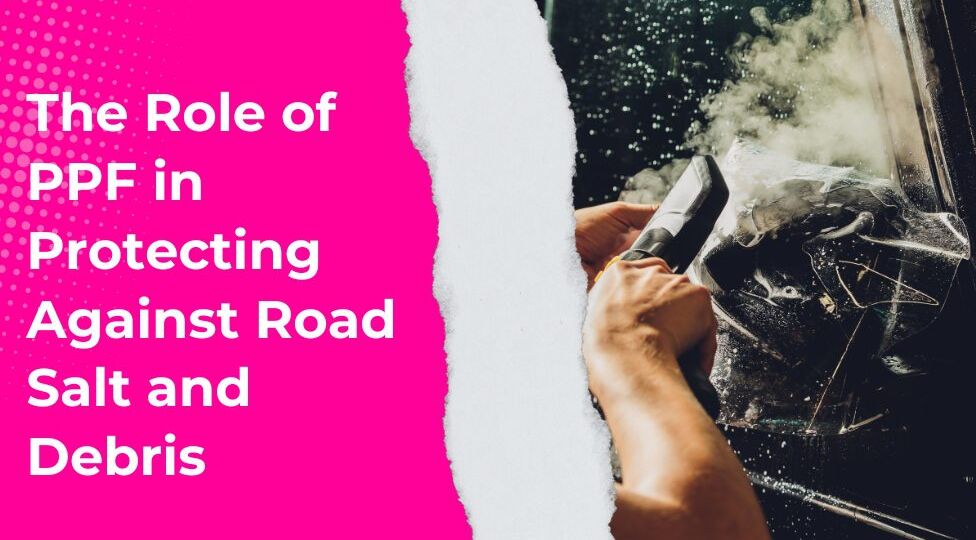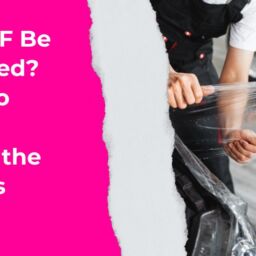
Paint Protection Film (PPF) has become an essential investment for vehicle owners who are serious about preserving the look and value of their cars. While most car owners associate PPF with protection against rock chips and scratches, its role goes far beyond cosmetic defense. In regions where harsh winters and rugged roads are common, PPF serves as a powerful shield against road salt, sand, and debris—elements known for causing significant wear and corrosion. Let’s explore how PPF provides superior protection and why it’s particularly beneficial for cold climates and rough driving conditions.
What is PPF?
PPF, also known as clear bra, is a transparent thermoplastic urethane film applied to the exterior surfaces of a vehicle. It is specifically designed to absorb impacts and resist abrasion. Once professionally installed, PPF becomes virtually invisible, offering long-term protection without altering the appearance of the vehicle.
Its self-healing properties allow minor scratches and swirl marks to disappear with heat exposure. This makes PPF not just a barrier but a smart, durable solution for drivers who want to keep their vehicles in pristine condition.
Why Road Salt and Debris Are Harmful
Road salt is commonly used during winter months to melt ice and improve traction. While effective for road safety, it poses a significant threat to your vehicle’s bodywork. Salt accelerates the oxidation process, leading to rust and corrosion—particularly on the undercarriage, wheel wells, and lower body panels.
Debris such as sand, gravel, and loose stones can also be found on roads year-round. These particles are kicked up by tires and can strike the paintwork at high speed, causing paint chips and scratches that not only ruin aesthetics but can also open the door to further damage.
The combination of salt and debris creates a harsh environment that gradually eats away at a vehicle’s paint and clear coat, making protection not just optional but necessary.
How PPF Works as a Defensive Layer
PPF acts as a sacrificial layer between your vehicle’s paint and the outside world. When salt or debris comes into contact with your car, it hits the film first. The material absorbs the impact and resists chemical reactions, thereby protecting the original paint underneath.
In colder climates, where frequent road salting is inevitable, this protection is invaluable. Drivers who have experienced damage caused by accumulated grime know how quickly unprotected paint can deteriorate.
Applying PPF ensures that your car remains unaffected by these destructive forces. Not only does it prevent direct contact with contaminants, but it also reduces the cleaning effort required after winter drives.
Long-Term Cost Savings
Rust repairs and paint correction services are expensive, often costing hundreds or thousands of dollars. In contrast, installing PPF may seem like a higher upfront cost but offers tremendous long-term savings by eliminating or significantly delaying the need for bodywork.
A well-maintained paint job also preserves resale value. Potential buyers are more inclined to purchase vehicles with original, undamaged paint. Thus, PPF is not merely a cosmetic product—it’s an investment in the longevity and value of your car.
Ideal Application Areas for Maximum Protection
Although full-body coverage is available, many car owners opt to install PPF on high-impact zones where salt and debris hit the hardest:
- Front bumper – A primary target for road spray and flying debris.
- Hood and fenders – Vulnerable to rock chips and salt spray.
- Side mirrors and door edges – Prone to scratches and dings from passing vehicles or narrow roads.
- Lower rocker panels – Most exposed to road salt and sand kicked up by tires.
- Wheel arches – Common spots for rust accumulation due to salt buildup.
Targeted PPF application on these areas ensures you’re getting the best protection where it’s most needed.
Seasonal Protection: Winter Benefits
Winter brings the highest risk of vehicle damage due to increased use of salt and abrasive traction agents. This is where PPF winter protection becomes especially crucial. The film helps in preventing salt from bonding to the paint surface, which not only reduces the likelihood of corrosion but also simplifies washing and maintenance during colder months.
Moreover, since PPF is hydrophobic, it repels water and makes it difficult for contaminants to stick. This feature is particularly useful when driving through slushy or dirty snow, minimizing the need for constant cleaning.
Debunking Myths About PPF in Cold Weather
Some drivers question whether PPF performs well in extreme temperatures. Modern high-quality PPF is engineered to withstand temperature fluctuations and environmental stress. It remains flexible and adheres well even in freezing conditions, maintaining its effectiveness throughout the season.
It’s also UV-resistant, meaning it won’t discolor or degrade over time, even with snow reflection intensifying sunlight exposure during the winter.
Installation and Maintenance Tips
To maximize the benefits of PPF, it’s essential to have it professionally installed. Surface preparation, alignment, and technique play vital roles in how well the film adheres and performs. A poorly installed film may peel or bubble, reducing its protective capabilities.
Post-installation, the film requires minimal maintenance. Wash your car with a PPF-safe shampoo, avoid abrasive brushes, and consider using a ceramic coating over the PPF for added gloss and hydrophobic performance.
Who Should Consider PPF?
If you:
- Live in regions with snowy winters or gravel roads
- Frequently drive on highways or construction zones
- Want to maintain the factory look of your car
- Are concerned about long-term vehicle resale value
- Prefer low-maintenance paint protection
Then PPF is highly recommended. It offers comprehensive, passive protection that works 24/7 without any need for reapplication or monitoring.
Final Thoughts
In today’s driving conditions, protecting your vehicle goes beyond just regular washing and waxing. The environment presents constant threats in the form of salt, sand, and debris, especially in colder regions. This is where PPF road damage prevention becomes a smart and essential solution.
By investing in PPF winter protection, you ensure your car remains shielded against the elements that cause corrosion, discoloration, and paint damage. With rising vehicle maintenance costs and an increasing desire to preserve the value of your asset, Paint Protection Film delivers peace of mind and lasting results.



